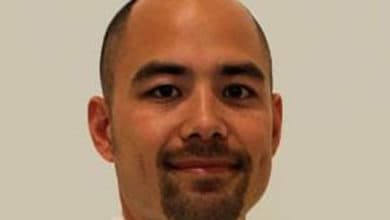If Shakespeare was alive today, Hamlet might be asking, “To apply or not to apply, that is the question.” I’m referring to the common query as to whether an aspiring physician should go the osteopathic route or doggedly pursue an allopathic education. My response is always the same. Do you want to be a doctor or do you want to be an M.D? If the answer is doctor, then an osteopathic medical education should be considered. There are differences between osteopathic and allopathic training however the philosophical and practical differences have been minimized since the introduction of osteopathy by Andrew Taylor Still MD, DO in 1892. His school, located in Kirksville, Missouri, emphasized a holistic approach to maintaining good health and introduced osteopathic manipulative treatment as an adjunct to conventional medical care. The institution took an inclusive approach by including women and minorities, a rarity at the time. Currently there are 34 accredited osteopathic medical schools located in 49 locations throughout the U.S.
|| Read More: Should I go to a Caribbean Medical School?
A Quick History
The osteopathic medical profession has a long tradition of providing care in rural and underserved communities, with more than half of osteopathic graduates pursuing a career in primary care. Still, 44% of active DOs practice in non-primary care specialties, helping to meet the growing demand for specialists in surgery, OB-GYN, emergency medicine and anesthesiology.
But what about the ability of the osteopathic graduate to match with quality residency programs? As of now, the DO and MD residencies are separated. Osteopathic graduates can apply for both types of residencies as long as they take the USMLE (MD licensing exam) in addition to the COMLEX (DO licensing exam). Certification of both allopathic and osteopathic residencies will soon be merging into a single medical education accreditation system.
What is the MD/DO merger?
The point of the merger is to create one accreditation system to ensure a consistent method of evaluating residency programs and expand the training opportunities for both DOs and MDs.
|| Read More: Medical School Chance Predictor
All current osteopathic residencies will need to apply for ACGME accreditation. Some programs may not meet the requirements however the merger is designed to improve the quality and requirements of medical education for all physician graduates. At present, DO residencies generally consider COMLEX scores while MD programs look at USMLE scores. There are many programs that accept both but following the merger all programs should accept both. While DO students taking the COMLEX will be eligible for all programs, the increased competition due to the elimination of some programs may make the USMLE an important addition to the residency application process for osteopathic graduates.
Why should I consider DO schools?
Aside from the appeal associated with training that emphasizes holistic and preventative care, the osteopathic schools set metric thresholds that are somewhat lower than allopathic schools. This provides an opportunity for well qualified individuals with somewhat lower GPAs and MCAT scores to realize their goal of a medical career as a physician.
|| Read More: Should I Apply to DO schools?
How do I apply?
If that appeals to you, consult resources that include the websites for the AACOMAS (American Association of Colleges of Osteopathic Medicine) and the AOA (American Osteopathic Association). Note that AACOMS (centralized online application service for the U.S. colleges of osteopathic medicine) accepts applications approximately one month earlier than AMCAS.
So think about what you really want to accomplish and keep your options open. Be honest with what you deeply feel and value. Heed the words of Polonius, chief counsellor of the king. “This above all: to thine own self be true.”



